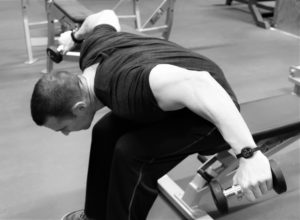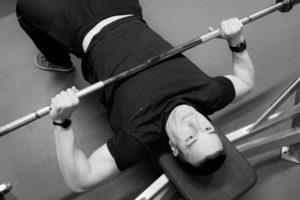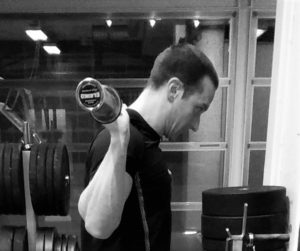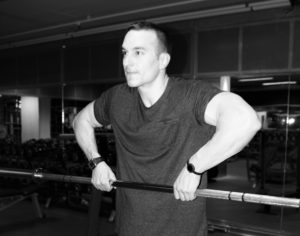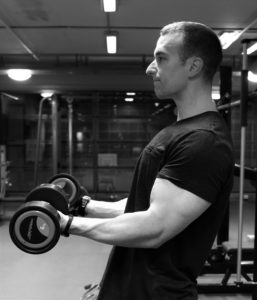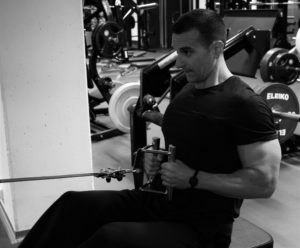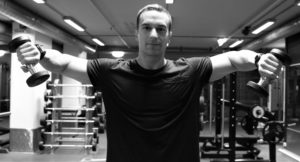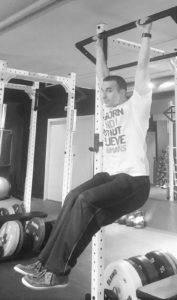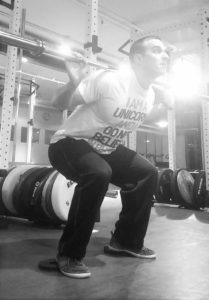In my last post I was summarizing basic principles about exercising in general. Now comes the bread and butter where we will answer the basic question: “How to exercise correctly from the point of healthy joints”. This can be already answered by: “We have to align the joints into the functionally centralized position, in order to prevent damages. It has been already mentioned earlier that we do not exercise only muscles, but also the control area – brain. The following post results from this approach – we train brain by joint alignment. The ultimate goal is automating the joint settings for use in daily life.
What is the current practice in the gym from the point of view of joint alignment?
Unfortunately, what you can see in the gym at these days are decentralized (pathological) joint configurations thanks to using inappropriate exercises and defective exercise techniques. This is usually caused by copying of exercises from any sources, without understanding the risks and benefits of each movement. Perhaps these movements were not so unfamiliar back in the days. This is not the case any longer with a growing population that barely leaves the spot in front of PC and goes directly to the gym. Thus making us more prone to injuries. It is essential to consider this and prepare for more difficult exercises and to learn how to stabilize joints.
In general, the young and other gym participants don’t incorporate joint health into their regime. They often mimic what they see that aesthetically attractive people do. Unfortunately, without proper feedback joint damage may incur but will not be noticed right away. We can see the incorrect execution of the exercises by the medial stars in TV or recorded on DVDs. The worst is when a man might get hurt by exercises which are supposed to help treat an injury.
You can start working out on you own, however it is necessary to learn the right joint configurations and gradually incorporate their applications into the strength and other activities. This will be described in my next posts. In the table below you can find some of the exercises a beginner should avoid.
Most frequent mistakes during exercising
| Name of the Exercise | Location of Pain | Number of picture / picture |
| Sit ups with locked shins | Lower back, hips |
1 |
| Lateral raises with little fingers pointing up | Shoulders, neck |
2 |
| Bench press with elbows pointing out | Shoulders |
3 |
| Shoulder press with Barbell behind head | Shoulders, neck, head |
4 |
| Upright rowing with extruded chin | Trapezius, shoulders, neck
|
5 |
| Biceps curls with cheating and leaning backwards |
Lower back, wrists |
6 |
| Low cable rows with breath in chest | In between the shoulder blades, lower back |
7 |
| Bent over lateral raises with dumbbells | Neck, head |
8 |
| Hyperextensions, with leaning head backwards | Neck, head, lower back |
9 |
For example, during the shoulder press behind head (picture 4) or during cable pull down behind head we can experience head being pushed forward, which is endangering the neck spine, shoulder joints are coming into the internal rotation, etc…. Furthermore, aches and other disorders can also arise through improper technique during otherwise harmless exercises. As a example we can name the “leg raise” in the hanging position. It is desirable for exercising abdomen muscles but only if a trainee is performing this exercise correctly. On the contrary, a pelvis tilted backwards in a “dragging” position can be harmful (picture 10). Knee injuries caused by squatting with inclined heels (picture 11) is also a common mistake. This can be attributed to the joint surface being overloaded and therefore overloading the cartilage between the femur and the knee cap. (Tlapák Petr, 2014.)Fortunately, when performed correctly, squats can be one of the best preventative and compensational exercises.
picture 10
picture 11
References:
Tlapák Petr, 2014. Posilování kloubní kondice: centračně-stabilizační cvičení, Praha: ARSCI.


